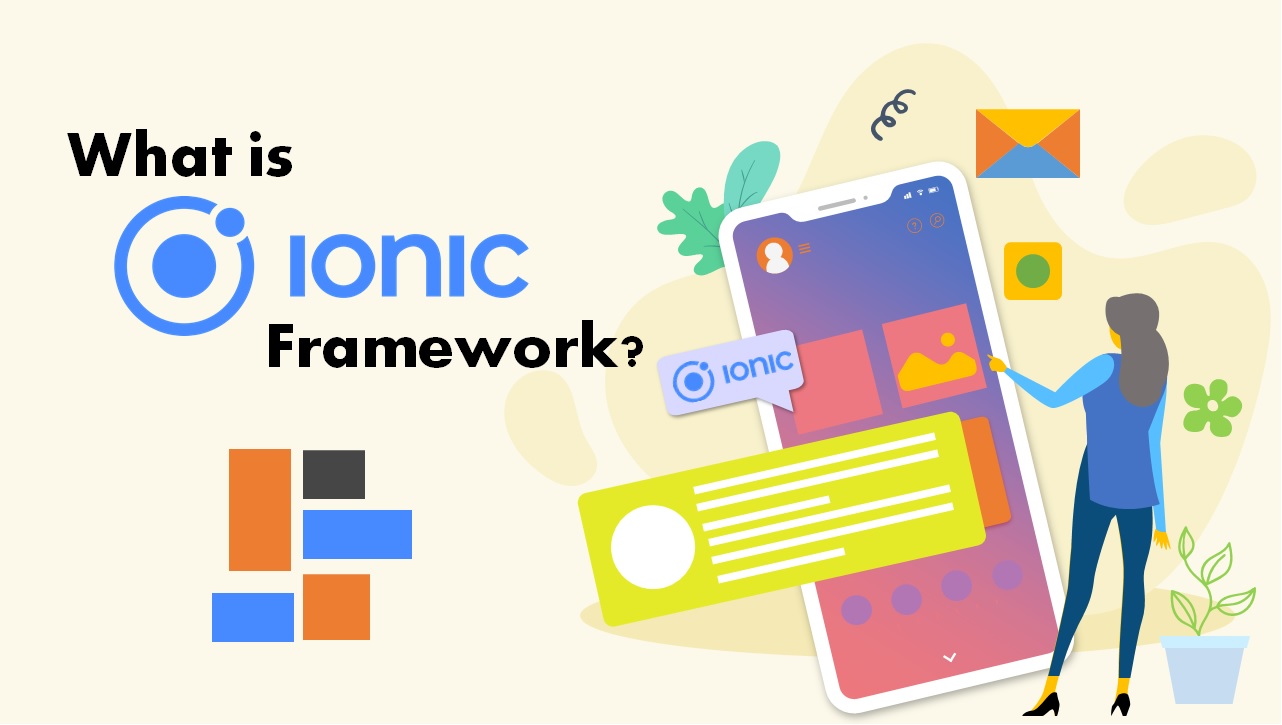Ionic framework is an open-source UI toolkit for building performant, high-quality mobile apps, desktop apps, and progressive web apps using web technologies such as HTML, CSS, and JavaScript. It allows developers to build once and run everywhere. It was created by Max Lynch, Ben Sperry, and Adam Bradley of Drifty Co. in 2013. The first beta version of the Ionic framework was released in March 2014.
The Ionic framework focuses on front-end user experience or UI interaction, which handles all the look and feel of your app. It is easy to learn and can integrate with other libraries or framework such as Angular, Cordova, etc. It can also be used as a standalone without a front-end framework using a simple script include.
Officially, the Ionic framework has integration with Angular, but it also provides support for Vue.js and React.js, which are in development.
The device installs the Cordova app container locally (like a native app), but the app uses an embedded browser to connect to any mobile platform capabilities. Ionic apps have access to device-specific features like GPS, camera, or flashlight for mobile devices. The embedded browser and any plugins are invisible to the user, meaning to them it seems just like a native mobile app.
Essentially, Ionic Framework lets you build a single web application codebase and effortlessly distribute it as both a desktop and mobile application across multiple platforms.
The above facts established that Ionic is an open-source SDK for Hybrid mobile app development, but what makes it so popular among mobile app developers is the plethora of features it carries along with it.
Ionic app developers work with over 120 native device features such as HealthKit, Fingerprint Authorization, Bluetooth, Camera, Storage along with Cordova plugIns and typescript extensions, it allows mobile app developers the utmost ease of developing advanced applications.
To list down the key salient features of the ionic framework:
- Primarily, it provides all the functionalities that are found in native mobile development SDKs. That simply means that the developers can create their own apps and easily customize them for any OS – Android, iOS or Windows, or deploy them through Cordova or latest Capacitor.
- Ionic comes loaded with an immensely powerful CLI, providing the developers with the ability to build and test Ionic applications on any platform It provides the ionic app developers elements and ways for interaction using Angular.
- The collection repeat feature is Ionic Framework’s smoothest solution for scrolling huge lists without any performance hits. It creates a scrollable container with which the app developers can interact by using a native-like delegate system.
- It is based on SASS and thus it provides a load of UI components for creating really advanced, robust applications.
Now that we have looked into the features of the Ionic framework, let us get back to what we gathered here for – To know what makes Ionic the best choice for Progressive Web Apps (PWA) development.
Progressive Web Apps with Ionic Framework – Why?
A progressive web app is a normal web app which looks and feels like native mobile apps. It uses modern web capabilities to deliver an app-like experience to the user. These apps can easily deploy to servers, accessible through URLs, and indexed by search engines. The PWA app optimizes to be:
- Reliable: Load fast and provide offline functionality.
- Fast: It should be fast and respond quickly to user actions.
- Re-engageable: It makes re-engagement with the user through push notification, which feels like a native app on the mobile device.
Ionic Framework is a great choice for creating Progressive Web Apps (PWA) having basic native functionalities within an application which can run on multiple devices and operating system. The main advantage of the Ionic framework is that we can build the app once, rather than multiple times for separate devices and can deploy everywhere. It makes the app development fast and cost-efficient. It also reduces the need for maintenance.

